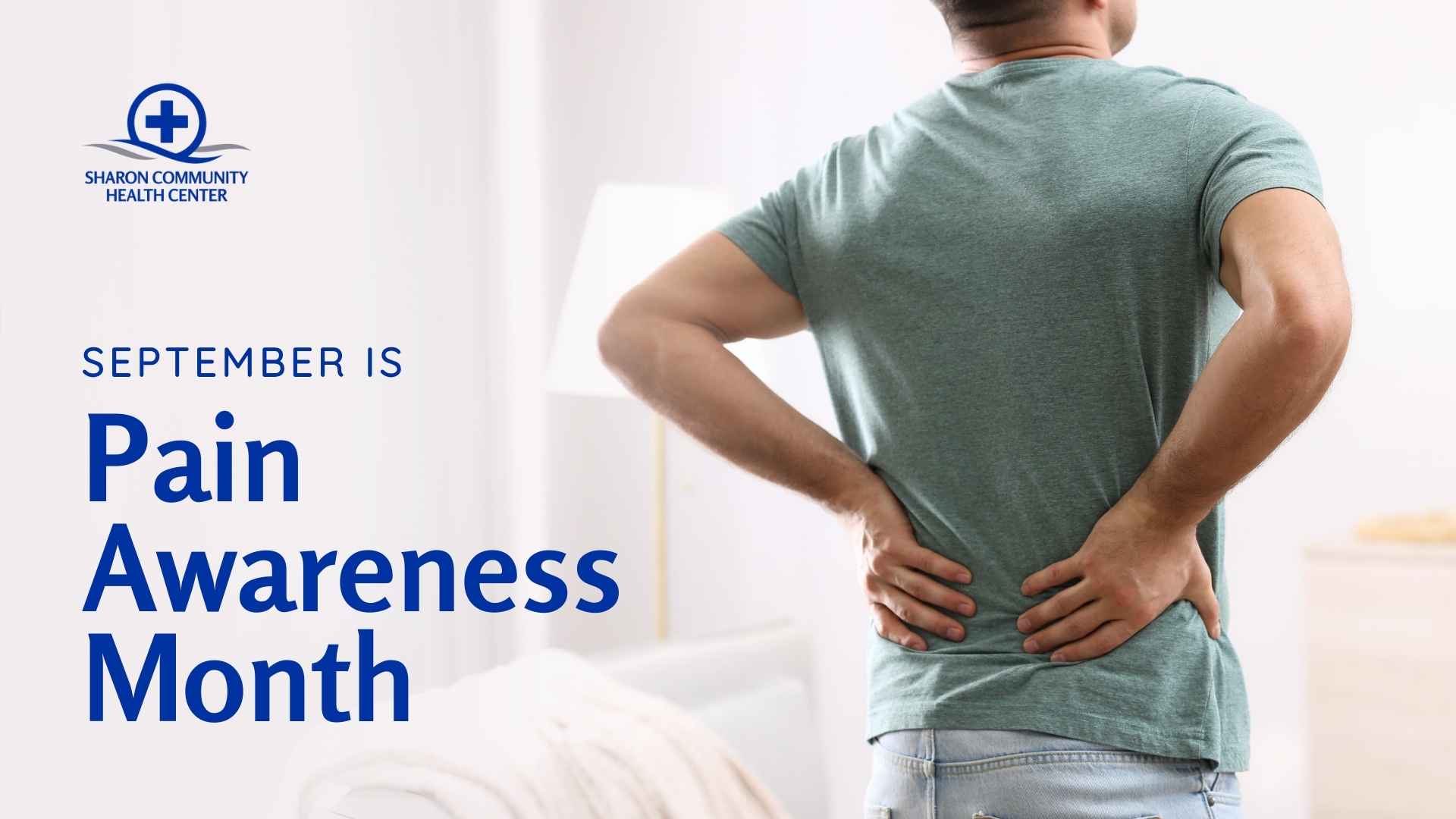
September marks Pain Awareness Month, a time dedicated to educating the public on pain management, treatment options, and resources for those living with chronic pain. At Sharon Community Health Center, we aim to empower our patients with knowledge and strategies to improve their quality of life while managing pain.
About Pain Awareness Month
Chronic pain affects millions of Americans, often impacting their ability to perform daily tasks, engage in physical activity, and maintain overall wellness. Pain Awareness Month shines a light on these challenges, aiming to reduce stigma and provide tools for better pain control.
Pain Awareness Month was established in 2001 to raise awareness of the different types of pain, from acute to chronic, and the importance of comprehensive pain management. The month is a reminder that pain management should be a collaborative effort between patients and healthcare providers, with the goal of reducing suffering and improving daily function.
Three Steps for Managing Pain
1. Take a Holistic Approach
“When a patient is experiencing pain, a good place to start is to look at their lifestyle: Are they getting enough exercise? Are they eating the wrong foods, such as carbohydrates, red meat, soda, and alcohol? Are they overweight? One pound of excess weight equates to 5lbs on your joints. That means if you are 20 lbs overweight, your joints are carrying around 100 excess pounds. Are they smokers? Smoking causes inflammation.” – Dr. Molaskey
This holistic approach to pain management focuses on addressing factors that increase pain, such as poor diet, lack of movement, smoking. etc. By recognizing these factors and incorporating changes to daily habits, patients can often reduce the intensity and frequency of pain.
2. Determine Realistic Expectations
It’s important to recognize that while pain management can improve quality of life, eliminating pain entirely may not be realistic. As Dr. Molaskey notes,
“Most people over the age of 40 experience some pain; it’s part of the aging process. HAVING NO PAIN IS NOT REALISTIC. We equate pain on a 1-10 scale. A 1 is minimal pain, and a 10 is passing a kidney stone or giving birth to a 9-pound baby.”
By understanding what can be expected in the pain management journey, we can work together to move towards a life with less restrictions caused by pain.
3. Set Pain Management Goals
The goal of any effective pain management strategy is not to completely eliminate pain, but to improve function and enhance daily life. As Dr. Molaskey puts it,
“Our goal is to control your pain such that you may perform activities of daily living WITHIN REASON and not be limited by your pain. We want you to have more GOOD days than bad. In other words, more days UNDER 5 than OVER 5.”
By instating and sticking to a pain management plan, patients can regain control of their daily lives. Pain management is not just about reducing numbers on the pain scale, but helping patients live more fully and with greater ease.
Partner with Sharon Community Health Center for Pain Relief
Pain Awareness Month is an opportunity to open up conversations about pain and the various methods available to manage it. At Sharon Community Health Center, we work closely with patients to create personalized pain management plans that take lifestyle, medical history, and patient goals into account. This holistic, patient-centered approach helps individuals achieve a better quality of life, with more “good days” on the horizon.
If you are interested in learning more about our pain management services, please click here or call 724-347-3063. (Please note: our Pain Management department sees patients ONLY who have been referred by a Primary Care Physician or Specialist.)
